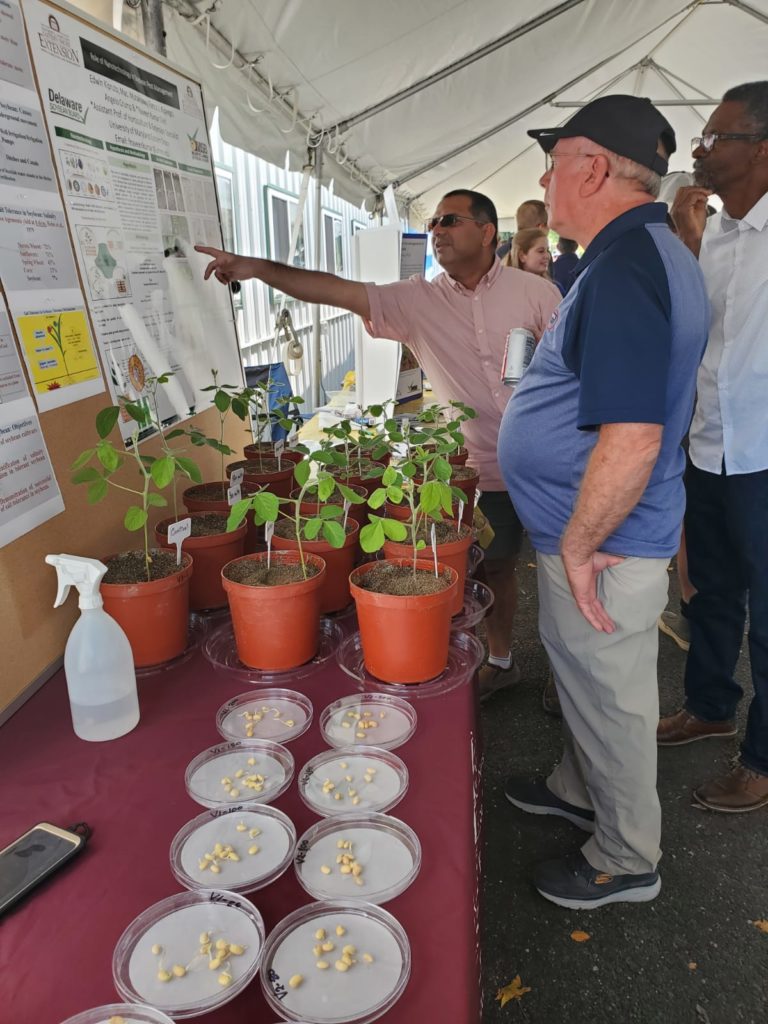
Delmarva farmlands are among the most critical areas of susceptibility to rising sea levels due to global climate change. Saltwater intrusion and well irrigation can impair the growth of salt sensitive row crops such as soybeans and corn—traditional staples for agricultural producers in the Mid-Atlantic.
Dr. Naveen Kumar Dixit, a UMES Extension specialist and assistant professor of horticulture, is looking at ways to help area farmers mitigate the adverse effects of climate change on farm productivity and sustainability through research and extension activities on salt tolerant soybeans. Dixit conducted research from May-October 2021 funded by a nearly $20,000 grant from the Maryland Soybean Board and presented his findings at events such as the annual Maryland Commodity Classic at Queen Anne’s 4-H Park last summer. He worked with three varieties of soybeans, comparing how commercially available varieties compare to a salt tolerant one.
The higher ranges of salt concentration in coastal farmlands in the area according to a 2020 study (Bill Lambrecht and Gracie Todd) are from 1.3 to 4.5 parts per trillion, which has been found to inhibit the growth of row crops and help perpetuate invasive plants that are salt tolerant. Soybeans are moderately tolerant to salinity, but cannot tolerate more than 3 ppt of salt concentration or 5 deciSiemens per metre and at 8 dS/m fail to produce seeds.
Salinity, Dixit said, has negative effects on plant growth and development by “manipulation of osmotic and ionic stresses that trigger the formation of reactive oxygen species such as superoxide radical, hydroxyl radical and hydrogen peroxide.” Reactive oxygen species, he said, can damage multiple cell organelles, proteins, nucleic acids and promote lipid peroxidation of membranes causing cell and plant death. Thiobarbituric acid reactive substances are the byproduct of lipid peroxidation indicating membrane damages as well as the production of hydrogen peroxide. ROS and TBARS are indicators of oxidative stress and can be used to differentiate between salt sensitive and salt tolerant soybean varieties.
“Screening salt tolerant soybean varieties will help growers select those that can survive in salt affected soils,” Dixit said. “Cultivation of salt tolerant crops in coastal areas not only minimizes economic losses on farms, but also prevents soil erosion and the proliferation of invasive plants.”
Gail Stephens, agricultural communications, University of Maryland Eastern Shore, School of Agricultural and Natural Sciences, gcstephens@umes.edu, 410-251-7009.

